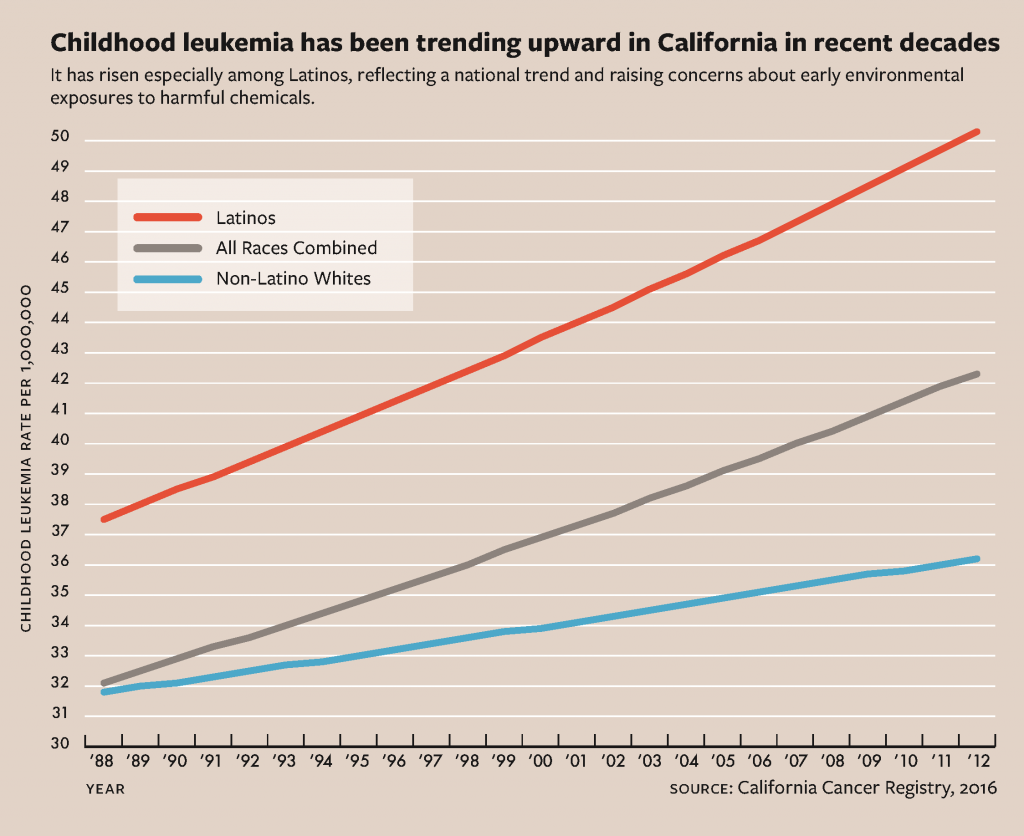CIRCLE Research Shows Leukemia Incidence is High and Rising in Latino Children
A recent publication from CIRCLE researchers shows that Latino children are more likely to develop leukemia than non-Latino children. The paper also reported that the incidence of childhood leukemia is increasing at a faster rate among Latino children than among non-Latino, white children.
The study, which will be published in the journal, Cancer, was conducted by CIRCLE investigators, Catherine Metayer, Mark Miller, and Todd Whitehead, in collaboration with their colleague, Brenda Giddings, from the California Cancer Reporting and Epidemiologic Surveillance Program. The investigators used the California Cancer Registry to catalog 11,084 cases of leukemia diagnosed in children from 0-19 years-old between January 1, 1990 and December 31, 2012. Using the data they estimated age-adjusted incidence rates, standardized rate ratios, and trends in incidence by disease subtype, race/ethnicity, sex, and age group.


The risk of childhood leukemia is higher among Latino children than among non-Latino children and the gap is widening.
Compared with non-Latino, white children, the incidence of acute lymphoblastic leukemia — the most common subtype of childhood leukemia — was higher among Latinos and lower among African American and Asian children. From 1990 to 2012, the incidence of acute lymphoblastic leukemia increased overall (annual percent change of 1.1%) and the rates increased most quickly for African American children (annul percent change of 1.9%) and among female Latino children (annual percent change of 1.5%).
The incidence of acute myeloid leukemia — a less common subtype of childhood leukemia — did not appear to differ among racial/ethnic groups. From 1990 to 2012, the overall incidence of acute myeloid leukemia remained stable but rates increased among Latinos (annual percent change of of 1.2%), especially among Latinas aged 15 to 19 years (annual percent change of 3.4%).
In the paper, the authors discuss some possible reasons for the observed differences in the incidence of childhood leukemia between the four racial/ethnic groups evaluated in the study. Factors that may contribute to the disproportionate burden of childhood leukemia among the Latino population include elevated exposures to carcinogens and/or genetic susceptibility to leukemia.


